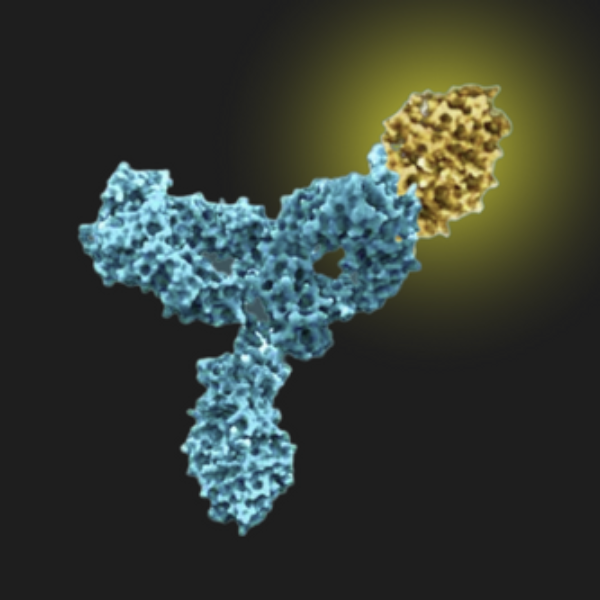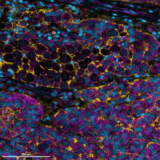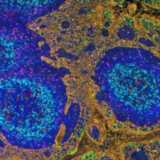Spatial Biology Education
Lighten up your spatial biology journey: tips for selecting the perfect secondary antibody for immunofluorescence staining
Posted on:

Immunofluorescence (IF) enables the detection and localization of a wide range of antigens in diverse cell and tissue types, and it is widely used in basic and translational research. Depending on the specific antibodies in use, we can distinguish direct IF (Figure 1.1), where the primary antibody is directly labeled with a fluorophore, and indirect IF (Figure 1.2), where the primary antibody is detected via a fluorophore-tagged secondary antibody1. The attached fluorophores have different excitation and emission spectra; therefore, they can be imaged using distinct light sources and filters.

Pros and cons of direct and indirect IF
Direct IF is recommended for highly abundant tissue antigens. On the other hand, indirect IF results in greater signal amplification, thus, is particularly beneficial for detecting low-expression proteins. Several secondary molecules will attach to each primary antibody thus amplifying the signal and increasing the assay’s sensitivity. In addition, secondary antibody conjugates are commercially available and relatively inexpensive, which avoids the need for laborious efforts to conjugate primary antibodies with fluorophores. Conjugation of the primary antibodies can also obstruct the antibody’s ability to recognize the antigen and lead to increased variability in results due to inconsistent labeling.
Despite the widespread use of IF, researchers frequently struggle to successfully detect a fluorescent signal from their target protein. In poor quality stainings, antibodies are often to blame. Various factors must be considered while selecting suitable antibodies.
How to select the best secondary antibodies for your experiments
We have previously discussed the importance of validating your primary antibodies (read more here). The correct choice of secondary antibodies is also essential to get reliable, high-quality data. We have collected these relevant tips to guide you in your selection of suitable secondary antibodies in order to achieve strong and specific fluorescent signal for your spatial imaging.
Consider secondary antibody host and target species:
- The primary antibody must target the species of the tissue sample to reliably detect the target epitope, while its host must be different from the tissue species in order to avoid getting background from the secondary antibody.
- The secondary antibody must target the host species of the primary antibody while being different from the species of the tissue. For example, a Goat anti-Mouse secondary antibody binds the Mouse anti-Human primary antibody which itself binds an antigen on a Human tissue sample (Figure 1.2). In the case of multiplex imaging (see below) on the same tissue using indirect IF, it is possible to detect two or more antigens at the same time. The antigens on the tissue sample are each targeted by primary antibodies that originated from different species and, subsequently, each primary antibody gets targeted by a secondary antibody, which bears a distinct fluorophore, that is specific to the primary antibody species. For example, on a Human tissue sample, a Goat anti-Mouse secondary antibody with fluorophore 1 binds the Mouse anti-Human primary antibody which is bound to antigen A and a Goat anti-Rabbit secondary antibody with fluorophore 2 binds the Rabbit anti-Human primary antibody which is bound to antigen B.
Select a secondary antibody that targets the class or subclass of the primary antibody
Related Articles
Assay development: how to overcome the challenges of TSA-based mIHC assays
Posted on 11 Oct 2022
Read Post
